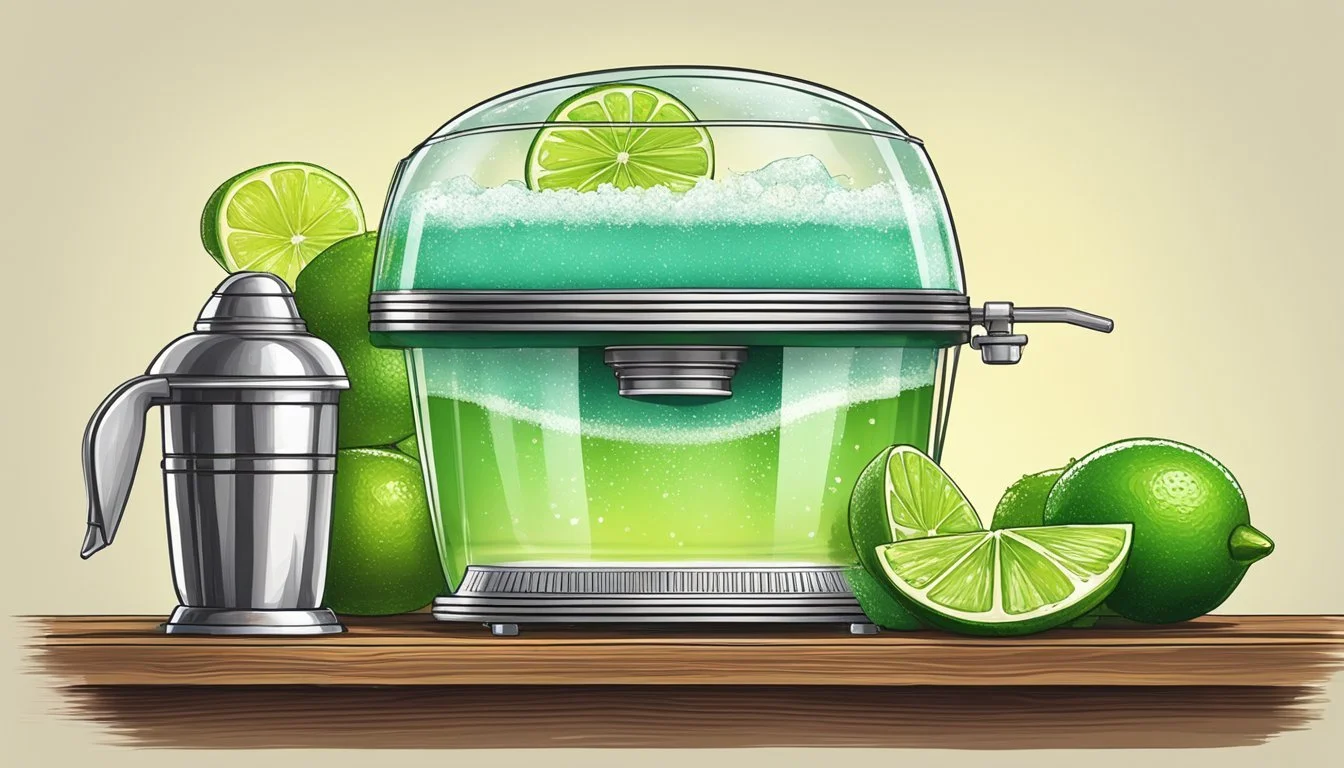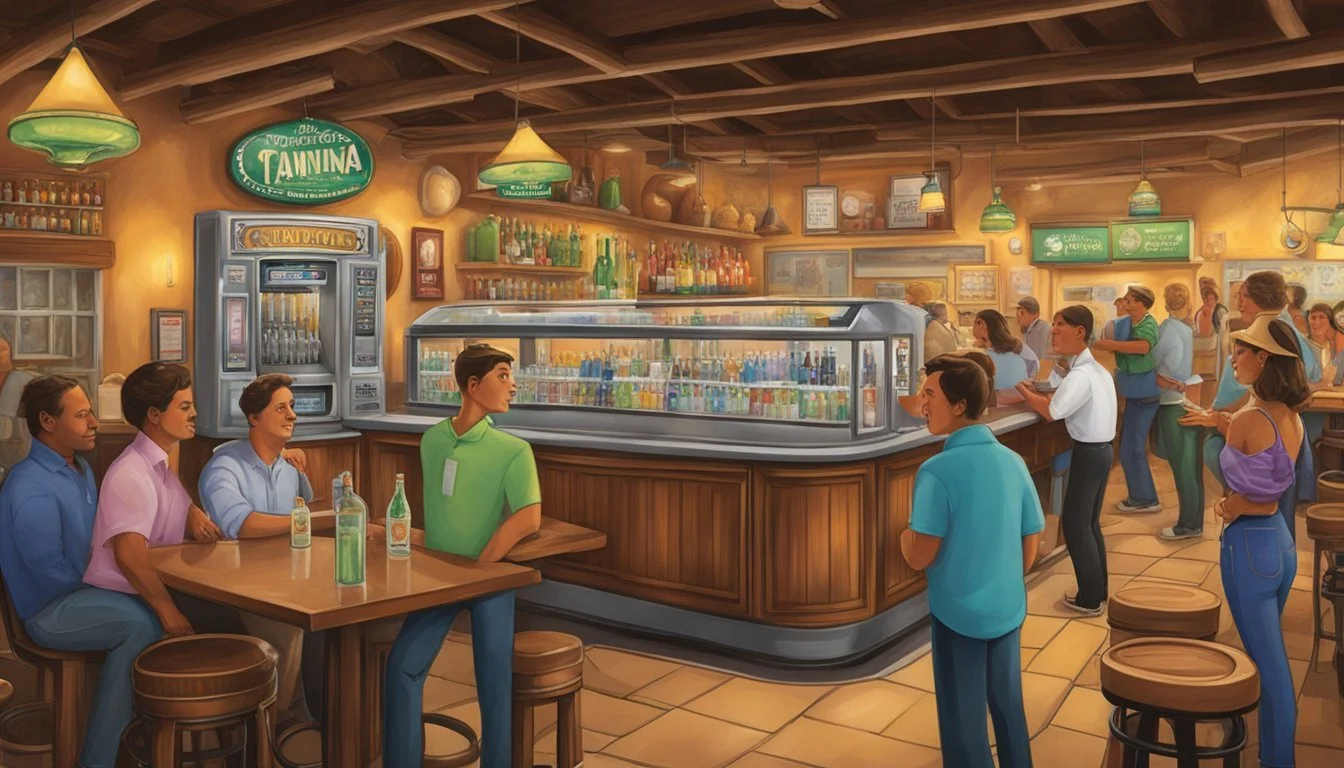The History of the Frozen Margarita Machine
Revolutionizing Refreshments
The frozen margarita machine, a ubiquitous fixture in bars and Mexican restaurants, owes its existence to Mariano Martinez, an innovator from Dallas, Texas. On a notable day in May 1971, Martinez revolutionized the way margaritas were served. His invention was spurred by the necessity to meet the high demand for this popular cocktail, ensuring consistency and quality with each serving. The advent of the frozen margarita machine not only streamlined the beverage-making process but also solidified the frozen margarita's place in cocktail history.
The popularity of the margarita, a blend of tequila, lime juice, and orange liqueur served with salt on the glass rim, was gaining momentum in the 1970s. However, creating the frozen variant was a manual and time-consuming process. The inception of the frozen margarita machine allowed restaurants to serve a high volume of these icy drinks without compromising taste or presentation. This innovation ultimately expanded the appeal and accessibility of the margarita, transforming it from a cocktail that could be cumbersome to produce to a rapidly served and refreshing beverage choice for patrons.
Martinez's motivation for creating the machine was a response to the practical challenges faced in his own restaurant. Before his invention, bartenders struggled to keep up with the demand, often dealing with blenders that couldn't withstand the workload and the physical strain of hand-squeezing limes. Martinez was inspired by soft-serve ice cream technology to adapt and create the world's first frozen margarita machine, ensuring that the frozen margarita became a staple in the collective social experience of enjoying a well-crafted cocktail. His machine was later acknowledged as a significant culinary innovation and is displayed in the Smithsonian's National Museum of American History, emphasizing the cultural impact of his creation.
Origins of the Margarita
The margarita, a cocktail enjoyed around the world, stems from a rich heritage rooted in Mexican cuisine and cocktail culture. This section details the history behind the creation of the margarita and its recipe progression leading to the invention of the frozen margarita machine.
Historical Context
The margarita is a cocktail that traditionally consists of tequila, lime juice, and triple sec, often Cointreau, garnished with salt on the rim. It is widely believed to have originated in Mexico during the late 1930s or early 1940s. Although there are several anecdotes about its creation, the specifics remain elusive, blending Mexican spirits with American influences. Over time, this cross-border exchange solidified the margarita's place in cocktail culture, particularly in Texas, where it embraced the fusion of local and Mexican flavors.
Margarita Recipe Evolution
The original margarita recipe has evolved significantly:
Base Spirit: Tequila, the key ingredient, is derived from the blue agave plant native to areas around Tequila, Mexico.
Sweeteners: Initially, the margarita may have been sweetened with a simple syrup or sugar.
Secondary Flavoring: Triple sec, a clear orange-flavored liqueur, was typically used, but some have opted for Cointreau for a more refined taste.
Acid: Lime juice added the necessary acidity to balance the sweetness.
The desire for a consistent and easy-to-make cocktail led to the inception of the frozen margarita machine in 1971, first implemented by Mariano Martinez in Dallas, Texas. Happy hour was never the same again, as the machine ensured every glass of the slushy concoction was as enjoyable as the last, underscoring the significance of the frozen margarita's place in American social life.
Evolution of Frozen Margaritas
The creation of the frozen margarita machine catalyzed a transformative period for a classic cocktail, intertwining technological innovation with cultural influence in Tex-Mex cuisine.
From Ice to Innovation
Before the advent of the frozen margarita machine, crafting a frozen margarita was a labor-intensive process. Bartenders would blend ice, lime juice, tequila, and triple sec in a blender, a task that was time-consuming and inconsistent, with the quality of the final product often being contingent on the bartender's skill and the blender's efficiency. It was on May 11, 1971, when Mariano Martinez, the inventor of the frozen margarita machine, revolutionized this process. Drawing inspiration from the Slurpee machines at 7-Eleven, Martinez modified a soft-serve ice cream machine to consistently deliver the beloved frozen concoction. This not only ensured a uniform quality and texture but also significantly expedited the beverage-making process.
Impact on Tex-Mex Cuisine
The frozen margarita quickly rose in popularity, securing itself as a staple in Tex-Mex restaurants across the United States. Restaurants could now serve frozen margaritas more efficiently, enhancing the dining experience and contributing to the wider spread of Tex-Mex flavors. The use of the frozen margarita machine allowed establishments to handle high customer volumes while maintaining the drink's consistency and taste. As frozen margaritas became an integral part of Tex-Mex cuisine, they played a key role in popularizing the food industry segment and its associated cultural elements.
Mariano Martinez and the Frozen Margarita Machine
In 1971, Mariano Martinez repurposed a soft-serve ice cream machine to meet the high demand for margaritas in his Dallas restaurant, forever changing the way this iconic cocktail was served.
The Inventor's Story
In Dallas, Mariano Martinez, an entrepreneur and restaurateur, saw an opportunity to innovate the way margaritas were served. Facing difficulty in creating consistent, quality frozen margaritas, Martinez was inspired by 7-Eleven's popular Slurpee machines.
The Machine's Creation
Martinez adapted a soft-serve ice cream machine to craft the first frozen margarita machine. The idea was born out of necessity as bartenders struggled to keep up with demand and maintain drink consistency at Mariano’s Mexican Cuisine. His invention allowed for the rapid production of frozen margaritas without sacrificing quality.
Patent and Mass Production
Martinez did not patent the machine, a decision that led to widespread replication and mass production of similar devices. Despite this, his original contraption earned a place in history and sits in the Smithsonian's National Museum of American History as a testament to its cultural impact.
Mariano’s Mexican Cuisine
Mariano’s Mexican Cuisine, Martinez's Dallas restaurant, became a birthplace for the frozen margarita machine. It quenched patrons' thirst with a consistent, smooth frozen margarita that quickly became the establishment's flagship offering, setting a new standard for Mexican restaurants in Dallas and beyond.
Cultural and Economic Impact
The invention of the frozen margarita machine has had a profound impact on both the culture and economy of the beverage and restaurant industries, influencing dining experiences worldwide and bolstering the Tex-Mex restaurant business.
National and Global Influence
The frozen margarita machine first made its appearance in Dallas, fundamentally changing the way margaritas were served. Its invention by restaurateur Mariano Martinez in 1971 paved the way for the popularization of this icy concoction beyond the borders of Texan border-cantinas. Undoubtedly, the machine's inclusion in the Smithsonian National Museum of American History underlines its significance, where it resides as part of the "Food: Transforming the American Table" exhibit. This signals the machine's role in not just reshaping the Tex-Mex restaurant business and liquor by the drink practices, but also its broader cultural impact in the United States and beyond.
Influence on Food and Beverage Industry
The ripple effect of the frozen margarita machine's invention on the food and beverage industry is striking. Not only has it been a boon for bars and restaurants by providing a consistent and efficient way to serve a popular drink, but it has also influenced liquor sales and the popularity of tequila. The machine-facilitated preparation process helped in popularizing the margarita, leading it to become one of the most ordered cocktails in bars and restaurants globally. This, in turn, has had a significant economic impact, providing a stable source of revenue for establishments and influencing the growth trajectory of the broader liquor market.
Frozen Margarita Machine as a Cultural Icon
The Frozen Margarita Machine has etched itself into American culture, particularly as an icon of Texan innovation, transforming the way people enjoy the classic cocktail.
Induction into the Smithsonian
Smithsonian National Museum of American History houses the original frozen margarita machine, acknowledging its significant contribution to America's social and culinary landscape. Invented by Dallas restaurateur Mariano Martinez on May 11, 1971, the machine's induction is a testament to its enduring legacy.
Symbolism in Texan Identity
The frozen margarita machine represents more than just a method of cocktail preparation; it is a symbol of Texas' creative spirit and cultural heritage. It has become an integral part of the identity of establishments in Dallas and beyond, with many proudly featuring the beloved machine. Texan identity is, in part, characterized by such innovations that have made a lasting impact on 'Margaritaville' culture nationwide.
Innovations and Variations
The frozen margarita machine, an innovation that married the concept of soft-serve ice cream production with blender-prepared drinks, revolutionized the Tex-Mex food and beverage industry by enabling mass production of consistently flavorful frozen margaritas.
Technological Advances
Advancements in the frozen margarita machine are deeply rooted in its origin story, where the adaptation of a soft-serve ice cream machine played a crucial role. This initial leap transformed the preparation of this beloved cocktail from a labor-intensive process with a blender to an efficient, consistent output suitable for higher-volume establishments. Today's machines offer sophisticated freezing and blending capabilities that allow for the mixture to maintain an ideal slushy consistency while preventing separation or ice crystallization.
Key Technological Features:
Consistent Texture: Modern machines ensure a uniformity in texture, crucial for the perfect frozen margarita.
Temperature Control: Precise temperature settings prevent over-freezing, which can dull the flavor and enjoyment of the drink.
Flavors and Recipes
While the classic lime flavor remains a staple, the frozen margarita has seen an explosion of variety, with an array of flavors to suit any palate. These range from fruity options like strawberry and mango to more adventurous blends that incorporate spicy elements or exotic fruits. The versatility of the machine has encouraged chefs and bartenders to experiment with unique recipes, pairing flavors to complement a wide array of Tex-Mex dishes.
Popular Flavor Variations:
Fruit-Based: Strawberry, mango, peach, raspberry
Innovative Twists: Jalapeño-infused, watermelon-cucumber, hibiscus
Seasonal Specials: Offer limited-time flavors that cater to seasonal fruits and festivities
Through these innovations and variations, the frozen margarita machine continues to be a symbol of ingenuity and a centerpiece in the evolution of Tex-Mex cuisine and cocktail culture.
Contemporary Margarita Trends
The evolution of the margarita has made its mark on both the modern bar scene and in the convenience of home entertainment. Here we explore how the frozen margarita continues to influence drinking trends and the innovative ways it is being served today.
Modern Bar Scene
In today's bustling bar scene, the frozen margarita is a staple of happy hour menus, appealing to a wide audience with an ever-expanding variety of flavors. Bars specialize in crafting unique versions of this popular cocktail, incorporating premium alcohols and exotic flavors that go beyond the traditional lime. Bartenders often take pride in their frozen margarita creations, using fresh ingredients and top-shelf tequila to stand out.
Customers are increasingly seeking novel experiences, prompting bars to push the boundaries with offerings such as:
Spicy jalapeño-infused margaritas
Tropical mango and passion fruit variations
Herbaceous blends featuring basil or cilantro
Margaritas featuring smoky mezcals instead of tequila
Home Frozen Margarita Machines
The trend of home cocktail crafting has surged, and with it, the popularity of home frozen margarita machines. They offer a convenient way to replicate the bar experience at home. Brands now offer a range of products, from basic models to sophisticated machines that can mix multiple batches simultaneously, catering to the casual host and the serious home bar enthusiast alike.
Homeowners invest in these machines for several reasons:
They allow for consistency in taste and texture.
They are easy to use, adding convenience to home entertaining.
They can be a centerpiece for social gatherings, especially during summer months.
The home frozen margarita machine market is diverse, with models featuring:
Different capacities: from a few servings to party-sized batches
Variable settings for texture and thickness
Built-in features, such as dispensers and automatic timers






